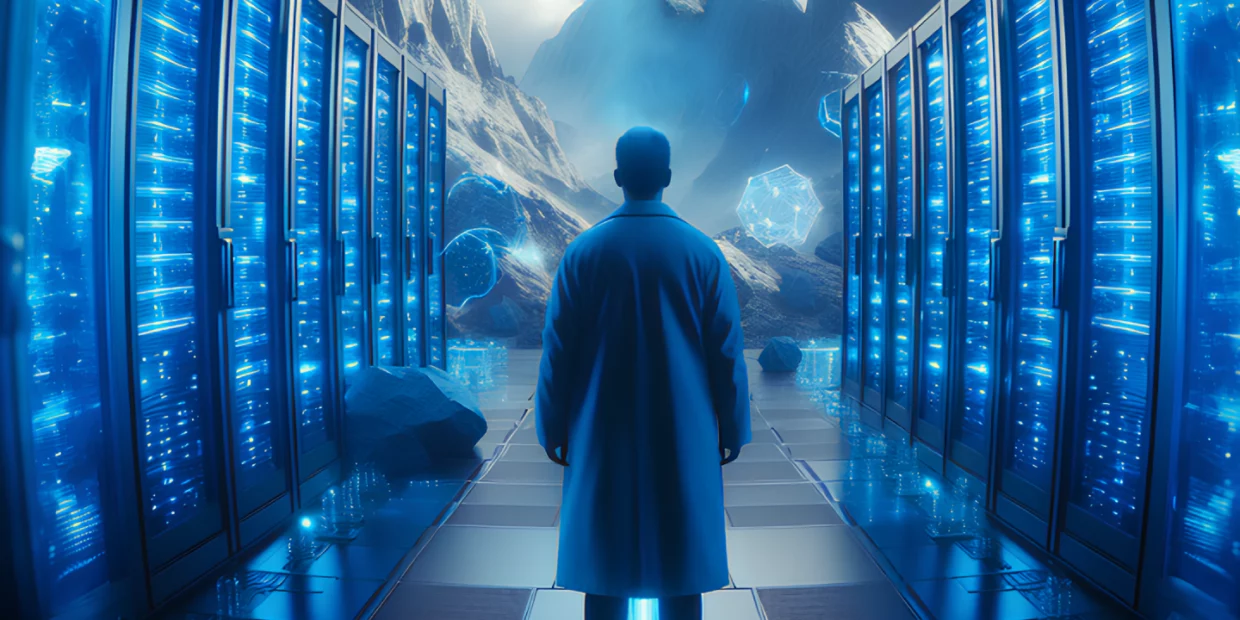Listen to the post
Introduction
Technology is growing at a pace beyond our ability to constantly keep up. In the face of increasing cyber threats, organizations must now navigate a challenging landscape. The threat environment is becoming more and more aggressive, and the scope of digital assets that require protection has greatly expanded. To complicate matters further, the technological advancements we are eagerly awaiting will also be exploited for malicious purposes. In light of these challenges, businesses must reassess their expectations and realign their focus to secure their future.
In this blog post, Group-IB’s CEO, Dmitry Volkov, documents a series of accurately predicted future cybersecurity trends that will heavily influence how businesses safeguard their interests.
In response to these forthcoming developments, Dmitry emphasizes the need for organizations to establish a sustainable competitive advantage by shifting from a reactive cybersecurity stance to a forward-thinking approach. The recommendations shared not only guide businesses through this transition but also enable them to understand and prepare against emerging threats in a proactive way.
Ready to plunge into the future of cybersecurity with Dmitry? Let the revelations unfold!
#1 AI will be used as both offense and defense
AI will be used more and more on both sides of the cyber battlefield. Cybersecurity specialists will use AI for defense — to detect and respond to threats. Meanwhile, cybercriminals will harness AI (or what is termed adversarial AI) to conduct attacks. The situation will lead to a constant battle between automated defense systems and AI-driven attack frameworks.
Recently Group-IB experts revealed ways in which the AI platform ChatGPT was misused. Within the logs of info-stealing malware, our Threat Intelligence platform found compromised credentials that have been traded on illicit dark web marketplaces over the past year.
To move away from the adverse impacts of adopting AI, however, it is important to note that the technology can be instrumental in honing our cybersecurity capabilities and will be used to enhance detection, monitor events, execute fundamental response actions, and generate reports.
#2 Cloud vulnerabilities will become a top concern
The current surge in artificial intelligence and the need to handle growing volumes of data are driving technological advancements to accommodate demand. Meanwhile, all this sensitive data requires bulletproof protection. Since AI is used in the cloud to build a network for storing enormous amounts of data, it’s crucial to safeguard cloud storage systems.
Given that companies are sprinting to adopt cloud-based tools and apps, technologies must be developed to secure cloud infrastructures as well. Cloud environments are prime targets, especially for nation-state actors seeking a competitive edge. Protecting cloud infrastructures is a necessity in this competitive landscape where data security and control are key.
The foremost step can be investing in an Attack Surface Management solution able to identify all IT devices, software, and services in the organization that either are not maintained or have been forgotten by the IT department and therefore pose security risks.
Another strategy is to use advanced detection solutions (such as Threat Intelligence) to map and analyze information about potential threats to an organization’s assets. Such solutions also help the security teams regularly check, in leaks and public repositories, for logins, email addresses, and passwords belonging to the company’s employees.
#3 Protection of digital and physical (IoT) assets will become a forefront issue
As internet-connected devices become more widespread, we need a shift in perspective. We can no longer view security for digital and physical assets as two separate concerns. If a digital asset is compromised, the physical asset could be compromised as well, and vice versa. Similarly, if one digital asset on a device is compromised, all the digital assets on that device should be considered as potentially compromised as well.
Software security and hardware security should be the same. Failure to fuse these aspects could lead to serious challenges in the future, with millions of devices becoming vulnerable. If this happens, the only option could be to replace every single device, which in many cases is impractical and not feasible.
This is an enormous challenge, especially as most businesses are being pushed to prioritize economic efficiency. Yet with help from AI, future device designs could offer solutions to make our digital and physical spaces safer. Such a forward-looking approach could in turn lead to a safer tech landscape overall.
#4 Compliance requirements will grow ever stricter — how to keep up with them?
Our focus and mindset should switch from compliance to practical security. Complying with regulations alone, without implementing effective security measures, can result in a false sense of virtual protection and put you at risk of security incidents and breaches.
That said, the fact that compliance requirements are changing must be factored in as well if you want to avoid non-compliance fines, which can be steep. Data breaches often result in legal action, substantial fines, and financial liabilities.
Experienced incident response experts play a crucial role in mitigating the consequences of non-compliance. Ultimately, compliance hinges on a combination of expertise, technology, and processes. To meet increasingly stringent requirements, a smart move is to have advisors by your side to help you deal with compliance regulations. You should choose experts based on the following attributes:
- Experience: Seek providers with a proven track record in handling diverse cases across different geographical locations. Practical security expertise should be prioritized instead of focusing solely on compliance. Specialists with the right experience are able to pass on their knowledge to your team, enhancing your overall response capabilities as a result.
- Technology: Choose providers equipped with advanced technologies that actively strengthen your security posture in the wake of emerging threats rather than merely provide passive guidance.
Learn how Group-IB Audit and Consulting experts can help you build an effective and iterative compliance program.
#5 Internet of Behaviors: behavior analysis will be used increasingly often
The current approach to cybersecurity has mainly been focused on endpoint protection, but there is a need for a fundamental shift. In recent years, considerable investment has been made in securing endpoints. Instead, businesses should be investing in user protection and behavior analysis. All cyberattacks, whether executed by humans or bots, follow specific behavioral patterns — and this is a critical gap in the cybersecurity industry.
AI plays a pivotal role in analyzing human behavior. As a result of the exponential growth of data derived from endpoints, browsers, and mobile apps, AI is effective in detecting abnormal behavior. We don’t just mean simple indicators like actions taken during non-working hours or a device being accessed from a new geographical location, but advanced analytics of behavioral signatures, including factors such as typing patterns, reading habits, navigation styles, swiping gestures, device handling, access preferences, and more.
We are ushering in a new era of technologies designed to protect us without infringing on our privacy. The shift signals a promising approach to cybersecurity based on ensuring robust defense mechanisms while respecting individual privacy rights. Group-IB is currently employing and further building AI capabilities to identify anomalous behavior in real-time to block malicious files and protect end hosts, user accounts, and more, as well as to collect forensic data for further research.
#6 Bending reality (VR & AR) and cybersecurity
Virtual Reality (VR) and Augmented Reality (AR) have not been fully explored in cybersecurity. They offer many possibilities, however, especially in areas like data analysis and result presentation. These technologies offer a unique advantage in that they simplify complex information and make it more accessible and easier to understand. Imagine a scenario where lengthy incident response reports can be transformed into immersive AR experiences that show, visually and interactively, how an incident evolved.
Leveraging VR and AR in cybersecurity makes it possible to provide a visual narrative of how an incident unfolded. Users won’t need to sift through extensive documentation. Instead, they can witness and interact with a visual representation of the incident in real-time. This not only enhances understanding but also allows for a more intuitive grasp of the situation. Using VR and AR in cybersecurity holds the potential to revolutionize how we interpret, learn, and respond to security incidents.
#7 Energy-intensive AI and data
Over the next few years, the world will rely more on nuclear synthesis as a crucial source of energy. This abundant energy will drive the progress of artificial intelligence and help manage the rapidly increasing amount of data that covers every aspect of human life.
All this data is not only vast but also highly sensitive, so it requires foolproof protection. The emerging energy sector will be a prime target for nation-states.
#8 Mirroring legitimate activity: the need to know what’s real and what’s not
Cybercriminals will become adept at using techniques that will make their illegitimate activities indistinguishable from legitimate ones. Detecting and mitigating cyber threats based on known patterns (signatures) will become increasingly challenging as a result and lead to a greater reliance on human behavioral analysis for threat detection.
#9 The rise of deepfakes and social engineering
The rise of deepfake technology will give cybercriminals a powerful tool for social engineering attacks. They will use realistic and convincing deepfakes to manipulate individuals and organizations, making it even harder to distinguish between genuine and fraudulent communications.
In today’s landscape, scams and phishing are among the most common challenges, and their threat is only expected to intensify as AI continues to evolve. Deepfakes are likely to be a serious concern for the cybersecurity industry. We must be ready to stay ahead and adjust our strategies to tackle the more advanced tactics used by cybercriminals embracing AI.
#10 Digital personalities (avatars) will be put on sale
In the future, cybercriminals are likely not only to sell access to personal data but entire digital personalities or avatars. These avatars will encompass everything needed to create a fake digital identity, including copies of documents, biometric data, and authentication information from social media and government systems. Individuals will be able to exist anonymously and securely in the digital realm.
Biometric data costs are going up, and the sad reality is that while some parts can and will be faked, others will be stolen. Personal data theft is still a pressing issue, with cybercriminals exploiting any possible source to get their hands on sensitive information.
The forthcoming wave of changes is far from complete
The upcoming shifts are major, and positioned to challenge the very premise of cybersecurity. New intrusion vectors, offense technologies, and increasingly sophisticated tactics may make it hard for businesses to mitigate every risk that is headed their way.
Needless to say, in the future, cutting corners with a basic cybersecurity strategy is a risk that should never be taken. That is where harnessing external expertise and support becomes crucial to help you stay completely fortified in the wake of current and emerging threats.
With Group-IB, tap into the powerful ecosystem of intelligence-driven technologies, tailored threat intelligence insights based on regional, industry, and landscape specifics, coupled with operational expertise. Also, benefit from a constant stream of firsthand information shared by our experts to fortify defenses against evolving changes.
As Part 1 wraps up, stay tuned to discover the next set of cybersecurity predictions by Dmitry Volkov in the next installment of the blog series.






























